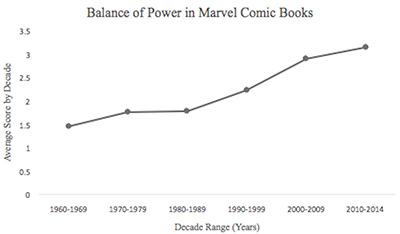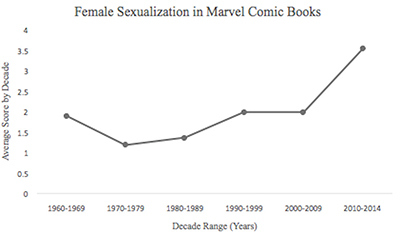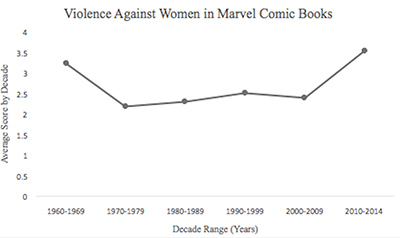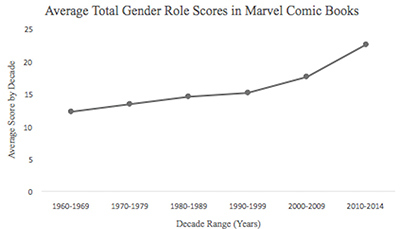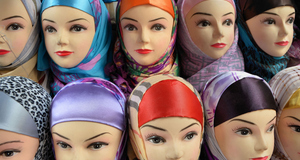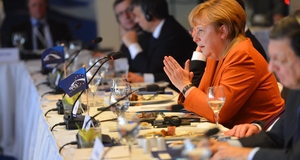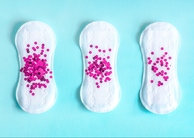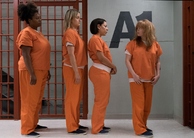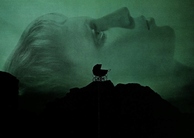From Discussions VOL. 12 NO. 2Analyzing Female Gender Roles in Marvel Comics from the Silver Age (1960) to the Present
By
Discussions 2016, Vol. 12 No. 2 | pg. 1/1
IN THIS ARTICLE
KEYWORDS
Comic books, a form of American popular culture, offer a window into the past, allowing researchers to track societal changes over several decades. The purpose of this study was to determine if, how, and how much female gender roles have changed in Marvel Comics from the Silver Age (1960) to the present (2014) to help understand how popular culture portrays and treats female characters. It was hypothesized that female gender roles in Marvel Comics in the last decade have become less stereotypical and more equitable as compared to the 1960s, as determined by the sevenpoint quantifiable rubric. The seven-point rubric underwent inter-rater reliability tests twice, with ten experienced raters. The researcher reviewed 68 Marvel titles for a total of 788 Marvel comic books broken down by decade from 1960 to 2014. Quantitative content analysis determined that the average overall female gender role scores for Marvel comics consistently went up by decade from 12.20 for 1960 to 1969 to 22.50 for 2010 to 2014, which supported the hypothesis and was significant at p = .001. Results were also tracked for the seven rubric categories between 1960 to 1969 and 2010 to 2014, respectively (score range 0 5): average cover art (0.39 to 2.61), Bechdel Test (1.21 to 2.72), storyline (2.55 to 4.00), occupation (1.50 to 3.16), balance of power (1.45 to 3.14), female sexualization (1.88 to 3.53), and violence against women (3.22 to 3.32) with significance noted in these subsets. According to Bradford Wright (2001), "Few enduring expressions of American popular culture are so instantly recognizable and still so poorly understood as comic books . . . Just as each generation writes its own history, each reads its own comic books" (p. 1). Comic books are a litmus test for pop culture itself. Comics do not exist in a vacuum. They are steeped in the thoughts, feelings, and values of their writers and readers. Female gender roles in comic books often reflect these values and attitudes, and they both illustrate and chronicle the year in which they were published. Popular culture and comic books offer the reader an inside look at how society functioned when they were written. According to Dr. Christina Blanch (2013), "One benefit of analyzing gender through comics is the ability to track attitudes over time" (para. 5). Comic books often parallel American culture, values, and politics. During the 1940s, comic book art inspired life and often imitated it. The comic books of the 1940s inspired women to be more than homemakers. The authors tried to inspire women to become part of the war effort, to leave their homes, enter the workforce, and fill the jobs previously held by men. This was the Golden Age of Comics, and the decade when female superheroes were christened symbols of American strength, freedom, patriotism, and independence (Larew, 1997, p. 592). With the end of World War II and the return of the male work force, women were relegated back into the home. There was a backlash and return to conservative family values in which men were the breadwinners and women the homemakers. Comic books reflected the swinging of society's conservative pendulum with regard to female gender roles. During the late 1950s, female superheroes were slowly vanishing. First, they were treated as powerless sidekicks to their male counterparts. Then, they began disappearing altogether. As women were forced out of the public sphere, they also vanished from comics (Larew, 1997, p. 596). Women are often marginalized in the superhero universe as in American culture. Comic books frequently perpetuate social or cultural gender stereotypes or both. For many young boys, comic books act as an agent of socialization, modeling social values, and gender roles (Ito, 1994, p. 90). Traditionally, comic books have targeted male readership. According to a 1995 survey, about 13.41% of comic book readership was female. The average age of women was 25 to 35, considerably older than the 16 to 24-year-old average for men (Emad, 2006, pp. 969-970). Today, young women make up 46.67% of comic book readership (Schenker, 2014, para. 5). "In the last few years, the market for super heroic women in comic books appears to be moving more strongly towards primary female characters" (Palmer, 2008, p. 3). With the 2013 to 2014 introduction of four new female superheroes—Angela Assassin of Asgard, Jane Foster as Thor, Kamala Khan as Ms. Marvel, and Carol Danvers as Captain Marvel, it seems that Marvel Comics is moving in that direction. However, empirical data is still needed. There have only been tangential studies of comic books, analyzing female gender roles. Of these, most only documented Japanese comics or Planet Comics rather than Marvel Comics, and they usually only analyzed cover artwork. The most comprehensive comic book study analyzing female gender roles was Karl Larew's (1997) "Planet Women: The Image of Women in Planet Comics, 1940 1953." It analyzed the number of female superheroes in Golden Age Planet Comics and the number of times they graced the comic books' covers (p. 592). In addition to Larew's, only two other quantitative comic book studies of female gender roles have been completed: Kinko Ito's (1994) "Images of Women in Weekly Male Comic Magazines in Japan" and Erik Palmer's (2008) dissertation "Superheroes and Gender Roles, 1961 2004." Ito dealt only with contemporary Japanese publications while Palmer analyzed only Marvel Comics' cover art. According to Dr. Erik Palmer (2008), "A strong quantitative analysis in the style of this study that covers a greater variety of titles over a longer period of time could provide valuable support" (p. 13). "Content analysis tries to seek what is communicated in documents . . . As a sociological methodology, content analysis is easy to use (unobtrusive) and rather cheap" (Ito, 1994, p. 83). Larew analyzed Golden Age Planet Comics by decade while Palmer analyzed the Marvel cover art in eight-year segments. Comic books are divided roughly into six ages: the Golden Age (1930 to 1959), the Silver Age (1960 to 1969), the Bronze Age (1970 to 1979), the Plastic Age (1980 to 1999), the Revival Age (2000 to 2009), and the present (2010 to 2014). From these very limited quantitative studies and other research, seven indicators of female gender roles or status were developed. The indicators or categories include: comic book cover art, the Bechdel Test, storyline, occupation, balance of power, female sexualization, and violence against women. The analysis of comic book cover art seems to be the only consistent factor that researchers have explored. These explorations include the number of women on the cover, the number of female superheroes in relation to the number of male characters, the size and proportion of the female characters, and their activity, passivity, or both (Larew, 1997, p. 596). The next indicator and arguably the least wellknown is the Bechdel Test. The test was developed by Alison Bechdel, an American cartoonist, in her comic strip, "The Rule." It was originally created as a test for film, has been adapted for television, and is flexible enough to be used with other media. The Bechdel Test has three criteria: The first is that the material must have at least two female characters with names; second, those two female characters must speak with each other; and third, that conversation must be about something other than men (Ulaby, 2014). "Female gender roles in comic books often reflect values and attitudes [of their writers and readers], and they both illustrate and chronicle the year in which they were published." Writers often overlook the female perspective, because male storylines are considered dominant or universal (Scheiner-Fisher, 2012, p. 222). This is true in comic books and other literature. In the Golden Age of Comics, female characters were used almost entirely as companions or sidekicks to their male counterparts. They rarely had storylines of their own (Larew, 1997, p. 598). Often, female characters were treated as window dressing. Traditionally, stories give meaning to life and shape gender roles. According to Marvel Senior Vice-President Tom Brevoort, "It's not that you can't have a successful or well-written female superhero, but in general, historically, proportionately, we just haven't had as many" (Rogers, 2011, para. 14). In addition to occupations being a strong indicator of female status, roles are important in comic books because superheroes have secret identities. In the Golden Age and early Silver Age of Comics, female characters often had no occupation, role, or even name (Jones, 2014). They were just window dressing. Those that had occupations were often limited to caregiving roles (Ito, 1994, p. 88). "The superheroine was placed on a pedestal of achievement, playing with the boys, and developing strength and identity in areas not traditionally available to women. But as females in a majority male universe, symbolically they had nowhere to go except into the roles of women that were recognizable and familiar" (D'Amore, 2012, p. 1229). For example, Susan Storm, aka the Invisible Woman, was a very powerful superhero in her own right, but she was relegated to the role of girlfriend, wife, and mother (Dunne, 2006, p. 6). The fifth indicator regarding female gender roles is the balance of power between male and female characters. "Surely you've noticed. Female superheroes aren't nearly as revered as male superheroes," from "Equal Fights" (O'Reilly, 2005, p. 273). Up until 1960, most superhero-sidekick partnerships were all-male. After that, many female superheroes would not exist without their male counterparts, for example: Hulk and She-Hulk, Spider-Man and Spider-Woman, and Captain Marvel and Ms. Marvel. Female comic book characters relied on their male counterparts to rescue them, care for them, make decisions for them, and give them a purpose in life (Emad, 2006). Women were almost invisible and certainly not in any position to make decisions (Ito, 1994, p. 87). From 1954-2005, the comic book industry was regulated and censored by the Comic Book Code Authority. From its earliest beginnings, the Anti-Comics Crusade was concerned about gender roles, sexuality, and violence, especially in relation to women (D'Amore 1227). And yet, female sexualization is a very prominent comic book feature, especially focusing on large breasts, long legs, and tiny waists. "More precisely, the portrayal of women characters throughout comic books builds upon and continues to perpetuate the idea that women are mere objects of desire, basically submissive and ineffectual creatures whose virtue is found in the lewd display of their body" (Jones, 2014, para. 2). "It was hypothesized that female gender roles in Marvel Comics in the last decade have become less stereotypical and more equitable." Comics have traditionally exploited women for male readership, making violence against women the 7th indicator. Women often serve the role of perpetual victim in comic books. They are threatened, kidnapped, assaulted, humiliated, violated, and often killed (Larew, 1997, p. 602). Materials & MethodsComic Book RatingsAt least 100 Marvel comic books were collected from each era: 1960 to 1969, 1970 to 1979, 1980 to 1989, 1990 to 1999, 2000 to 2009, and 2010 to 2014. A seven-point rating rubric for all comics was designed on rcampus.com with each category being rated from zero to five such that the highest possible score a comic could cumulatively receive was 35. Each comic was rated on seven categories: the Bechdel Test, Cover Art, Storyline, Occupation, Balance of Power, Female Sexualization, and Violence Against Women. XL Stat Software ProcedureAfter creating the seven-point rating rubric on rcampus.com, 10 experienced raters and the researcher scored the same comic book using the rubric to test for inter-rater reliability. Based on the raters' feedback and comparison of their scores, the rubric was revised and the inter-rater reliability test was repeated so that the average scores would differ by fewer than 0.5 points. Upon observing this degree of variability, 788 selected comic books for a minimum of 100 comics per decade (1960 to 2014) were reviewed by the researcher. The total scores (35-point maximum) and scores by category (5-point maximum) for each comic from the rubric content analysis were recorded. These scores were sorted by the following year categories with at least 100 comics being subjected to rubric analysis for each: 1960 to 1969, 1970 to 1979, 1980 to 1989, 1990 to 1999, 2000 to 2009, and 2010 to 2014. The average rubric scores were analyzed for statistically significant changes over time. ResultsThe purpose of this study was to determine if, how, and how much female gender roles have changed in Marvel Comics from the Silver Age (1960) to the present to help understand how popular culture portrays and treats women and female characters. It was hypothesized that female gender roles in Marvel Comics in the last decade have become less stereotypical and more equitable as determined by the seven-point quantifiable rubric as compared to the 1960s. Through the quantitative content analysis, the average female gender role scores for Marvel comics consistently went up by decade from 12.20 in the 1960s to 22.50 from 2010 to 2014. An ANOVA statistical analysis was run using XL-Stat Software. Significance was found, and the null hypothesis was rejected. T-tests were then run to determine the location of the significance. Comparing 2010 to 2014 data to each decade found very high significance at .001 for all of the time periods between 1960 and 2009. The researcher reviewed 788 Marvel Comic Books from the Silver Age (1960) to the present (2014). The content analysis was broken down by decade: 1960 to 1969, 1970 to 1979, 1980 to 1989, 1990 to 1999, 2000 to 2009, and 2010 to 2014. A minimum of 100 Marvel Comic Books were reviewed per decade. The titles of all 68 reviewed comics are listed in Appendix 1. The 48 analyzed data sets included the rubric's seven major categories and a statistical category, Overall Total Score for Female Gender Roles. These eight categories were analyzed for statistically significant changes by decade. An ANOVA statistical analysis was run using XL-Stat Software, and t-tests were run to determine significance. DiscussionThe purpose of this study was to determine if, how, and to what extent female gender roles have changed in Marvel Comics from the Silver Age (1960) to the present to propose a hypothesis for how popular culture portrays and treats women and female characters. It was predicted that female gender roles in Marvel Comics in the last decade have become less stereotypical and more equitable as determined by the seven-point quantifiable rubric as compared to the 1960s. Through the quantitative content analysis, the average female gender role scores for Marvel comics consistently went up by decade from 12.20 in the 1960s to 22.50 from 2010 to 2014. An ANOVA statistical analysis was run using XLStat Software that found the variations to be significant, so t-tests were run to determine the extent of significance. Comparing 2010 to 2014 data to that of each decade determined p = .001 for all of the time periods between 1960 and 2009 (Figures 1 to 8). For Female Gender Roles in Marvel Cover Art: In the 1960 to 1969, there was not a single rubric cover score over two, while there were fourteen perfect scores from 2010 to 2014 (Figure 1). This study showed a fairly steady improvement of the representation of women on Marvel comic book covers from 1960, where they were almost non-existent, to 2014, where representation was almost equal between male and female characters. There was a decrease in the range of 1990 to 1999 of 0.06, which was statistically negligible. The overall increase in score could be attributed to the increase in female title characters, writers, artists, illustrators, and readers (Chenault, 2007). This study's results were higher than those compiled by Dr. Erik Palmer in his analysis of three Marvel titles (The Avengers, Fantastic Four, and X-Men), spanning from 1960 to 2004. Palmer documented that women were represented on less than 15% of the Marvel comic book covers he reviewed in the 1960s and early 1970s. He noted the rise in representation of female characters on the cover to more than 24% in the late 1970s and just slightly higher than that through 2004 (Palmer, 2008). This study, with its much greater sample of 68 Marvel comic titles, documented female representation on 32% of Marvel covers from the 1960s. Female representation jumped to 70% in the 1970s with a large number of group or team titles published, after falling back to between 48% and 49% in the 1980s and 1990s, rising to 64% in 2000 and 67% in 2014. "In the last decade, Marvel Comics have created more female titles than ever before, and female readership is now over 46% of the market (Jones, 2015)." Originally designed for film analysis and adapted for use with other media, this is the first time that the Bechdel Test has been used in comic book analysis of female dialogue. The Bechdel Test results in this context showed a slow, steady improvement in female dialogue scores from 1960 to 2014 with a slight decrease in the 1990 to 1999 range (Figure 2). The 1990s, in many of this study's rubric categories, showed a decrease in score possibly due to a conservative backlash in American society and downsizing of the comic book industry. According to Jennie Whitwood, author of The Changing Role of Women in Comic Books, "Although these superheroines exist in the worlds of both DC and Marvel, they have a history of being little more than showpieces, just scantily-clad, big-breasted and generally useless ladies in lycra" (Jones, 2014). This lack-luster, unenthusiastic period in comic books is known as the Plastic Age (1980 to 1999) during which everything and everyone was disposable. Figure 1. The average scores for this category were 0.39 for 1960 to 1969, 1.27 for 1970 to 1979, 1.54 for 1980 to 1989, 1.48 for 1990 to 1999, 2.39 for 2000 to 2009, and 2.61 for 2010 to 2014. Comparing 2010-2014 data to each decade found significance at p = .001 for 1960 to 1969, 1970 to 1979, 1980 to 1989, and 1990 to 1999. No significance was found for 2000 to 2009. Figure 2. The average scores for this category were 1.21 for 1960 to 1969, 1.57 for 1970 to 1979, 1.79 for 1980 to 1989, 1.46 for 1990 to 1999, 2.48 for 2000 to 2009, and 2.72 for 2010 to 2014. Comparing 2010 to 2014 data to each decade found significance at p = .001 for 1960 to 1969, 1970 to 1979, 1980 to 1989, and 1990 to 1999. No significance was found for 2000 to 2009. Figure 3. The average scores for this category were 2.55 for 1960 to 1969, 3.44 for 1970 to 1979, 3.18 for 1980 to 1989, 3.20 for 1990 to 1999, 3.48 for 2000 to 2009, and 4.00 for 2010 to 2014. Comparing 2010-2014 data to each decade found significance at p = .001 for 1960 to 1969, 1970 to 1979, 1980 to 1989, and 1990 to 1999. Significance was found for 2000 to 2009 at p = .005. Figure 4. The average scores for this category were 1.50 for 1960 to 1969, 2.00 for 1970 to 1979, 2.53 for 1980 to 1989, 2.31 for 1990 to 1999, 1.98 for 2000 to 2009, and 3.16 for 2010 to 2014. Comparison 2010-2014 of data to each decade found significance (p = .001) for 1960 to 1969, 1970 to 1979, 1990 to 1999, and 2000 to 2009. Significance was found for 1980 to 1989 at p = .05. Figure 5. The average scores for this category were 1.45 for 1960 to 1969, 1.76 for 1970 to 1979, 1.77 for 1980 to 1989, 2.22 for 1990 to 1999, 2.90 for 2000 to 2009, and 3.14 for 2010 to 2014. Comparison of 2010-2014 data to each decade found significance ( p = .001) for 1960 to 1969, 1970 to 1979, 1980 to 1989, and 1990 to 1999. No significance was found for 2000 to 2009. Figure 6. The average scores for this category were 1.88 for 1960 to 1969, 1.18 for 1970 to 1979, 1.35 for 1980 to 1989, 1.97 for 1990 to 1999, 1.97 for 2000 to 2009, and 3.53 for 2010 to 2014. Comparison of 2010-2014 data to each decade were significant ( p = .001) for all of the time periods between 1960 and 2009. Figure 7. The average scores for this category were 3.22 for 1960 to 1969, 2.18 for 1970 to 1979, 2.31 for 1980 to 1989, 2.51 for 1990 to 1999, 2.39 for 2000 to 2009, and 3.32 for 2010 to 2014. Comparing 2010-2014 data to each decade found significance at p = .001 for 1970 to 1979, 1980 to 1989, 1990 to 1999, and 2000 to 2009. No significance was found for 1960 to 1969. Figure 8. The average total decade scores for this category were 12.20 for 1960 to 1969, 13.41 for 1970 to 1979, 14.46 for 1980 to 1989, 15.15 for 1990 to 1999, 17.58 for 2000 to 2009, and 22.50 for 2010 to 2014. Comparing 2010 to 2014 data to each decade found significance (p = .001) for all of the time periods between 1960 and 2009. From this study's scores in female representation on Marvel comic book covers and its Bechdel Test scores, there may be a connection between female visual representation and the quality of female dialogue present in comic books. Other than the 1960s cover score and the 1980s Bechdel Test score, the scores in these categories are very similar. For Female Gender Roles in Marvel Comic Book Storylines, there was a steady improvement in storylines related to female gender roles from 2.55 in 1960 to 4.00 in 2014, except for the 1980 to 1989 and 1990 to 1999 range (Figure 3). During the early 1960s, the lack of female characters and their interactions were often overlooked, because the male perspective was usually the dominant comic book storyline. "Women's history is generally left out of traditionally male-dominated history curriculum; when it is included, it is usually in the margins or in sidebars" (Scheiner-Fisher & Russell, 2012). This was how the phenomenon of the two-panel woman, a term coined by this researcher, in comic books was born. The two-panel woman is a female character who appears for two panels in the comic book just to make dinner or calm a baby, for instance, and then disappears. She is a one-dimensional character who has no bearing on the storyline of the comic book. From this study, the phenomenon of the two-panel woman was a dominant force in Marvel storylines in the 1980s and 1990s. Further study could show how this phenomenon may have affected storylines, female occupations, and readership. For Female Occupations in Marvel Comic Books, slow steady improvement in female occupations in Marvel comics was noted from 1.50 in the 1960s to 3.16 in 2014 with a dip in rubric scores from 1990 to 2009 (Figure 4). Storylines may not have been the only thing impacted by the 1990s cultural backlash. It also may have affected the female occupations portrayed in Marvel comics and its female readership. According to Marvel comic book writer and artist Trina Robbins, "Comics changed. There were very few superheroines that had their own titles . . . There was nothing out there for girls to read anymore" (Chenault, 2007). For Balance of Power in Marvel Comic Books, there was a consistently slow increase in rubric scores from 1.45 in 1960 to 3.14 in 2014. This category was one of the only ones not impacted by the 1990s trend (Figure 5). This could be explained by the cultural phenomenon of more women breaking through the glass ceiling of business at the end of the millennium documented in comic books. For Female Sexualization in Marvel Comic Books, the average scores decreased quickly in 1970 and 1980, plateaued from 1990 to 2009, and increased steeply from 2010 to 2014. One explanation for these erratic scores was the "Comic Book Code" (Figure 6). With the backlash to conservative family values and gender roles of the 1950s, it was created to address concerns about female objectification and violence, especially the changing female gender roles and the so-called lesbian and sado-masochistic fantasies portrayed in comic books (D'Amore, 2012). The code was rigidly enforced during the 1960s, so comic book writers and illustrators began to take great pride in working around its restraints, especially through the 1980s. Marvel Comics began to tire of and ignore the code in the mid-1990s (Tipton, 2008). In the last decade, Marvel Comics has created more female title characters than ever before, and female readership is now over 46% of the market (Jones, 2014). These cultural changes may help to account for the rubric scores across the decades, especially the precipitous increase in 2014. In this category, the Face-Off Test played a part in scoring. The test is used to note whether or not a character's illustration met actual human anatomy. On the television show, the judges always critiqued creations based on their ability to exist in nature with anatomically disproportionate creations scoring considerably lower. This researcher noted numerous times that many female characters' proportions could not exist in real life. For example, they lacked full rib cages, internal organs, spines, or the ability to stand upright without being pulled over by their breasts. Notably, the better a character did on the unofficial FaceOff Test the better the rubric score for that comic book. Further research could be undertaken to note trends in anatomical illustrations in comic books. For Violence Against Women in Marvel Comic Books, there was very little change from violence against women at 3.22 in 1960 and 3.32 in 2014, and when comparing 1960 to 1969 with 2010 to 2014, violence against women seems to remain constant (Figure 7). For the Average Total Female Gender Role Scores in Marvel Comics, this data seemed confirm its prediction. It was predicted that female gender roles in Marvel Comics in the last decade would become less stereotypical and more equitable as determined by the seven-point quantifiable rubric. As noted previously, the total female gender role rubric score went from 12.20 in 1960, slowly and steadily increasing through 1999, and then jumping to 17.58 in 2009, and rocketing to 22.50 in 2014. From 2010 to 2014, at no time in the history of the Marvel Universe have so many female comic book title characters been released, rebooted, and promoted (Fingeroth, 2014) including She-Hulk, Captain Marvel, Scarlet Witch, Miss America, Angela Assassin of Asgard, Thor, Storm, Kamala Khan as Ms. Marvel, and the first ever all-female X-Men team. If additional funding and time were available in the future, this research study could be improved and/or replicated with the use of multiple comic book rubric raters rather than the single researcher used in this study. This would strengthen the credibility of the results. One area that may have impacted and/or changed the results of this study was the unplanned randomization of comic books from 1960 to 1990 pulled for this study by a Bowling Green State University graduate student. This graduate student randomly pulled comic books for the researcher's review, so there was no formal randomization pattern for order of review, selection, and so forth. Likewise, there was subject bias affecting the results of this study; for instance, the researcher's overall reading preference for female characters may have impacted the results. The researcher randomly pulled comic books from 2000 to 2014 from public library collections as well as the researcher's personal collection. With the drastic increase in the overall rubric scores from 2000 to 2014, the hypothesis would still have been supported. "Comic books reflected the swinging of society's conservative pendulum with regard to female gender roles." Female comic book characters and female gender roles have certainly come a long way in the last fifty-five years. Female gender roles in comic books have changed and grown to illustrate socisociety's ever-changing views of women and their role in American culture. AcknowledgementsI want to wholeheartedly thank the Ray & Pat Browne Library for Popular Culture Studies and its donors to the William T. Jerome Library at Bowling Green State University. In addition to the library itself, I must personally thank Alex Koch for his help in selecting the Marvel comics and randomizing the reviewed series. ReferencesBlanch, C. (2013, January 23). What do comic books teach us about gender attitudes? Forbes. Retrieved from http://www.forbes.com/sites/forbeswomanfiles/2013/01/23/what-do-comic-books-teach-us-about-gender-attitudes/#4538f76a16ac Chenault, W. (2007). Working the margins: Women in the comic book industry. Georgia State University. Retrieved from http://scholarworks.gsu.edu/ wsi_theses/10 D'Amore, L. M. (2012). The accidental supermom: Superheroines and maternal performativity, 1963-1980. Journal of Popular Culture 45(6), 1226-1248. doi: 10.1111/jpcu.12006 Dunne, M. (2006). The representation of women in comic books, post WWII through the radical 60s. Portland State University (PSU) McNair Scholars Online Journal 20(1), 81-91. doi: 10.15760/mcnair.2006.81 Emad, M. C. (2006). Reading Wonder Woman's body: Mythologies of gender and nation. Journal Of Popular Culture 39(6), 954-984. doi: 10.1111/j.15405931.2006.00329.x Fingeroth, D. (2014, July 17). Why Marvel needs a gimmick like Thor's sex change. Time Magazine. Retrieved from http://time.com/3001549/marvelthor-female/ Goldstein, L. & Goldstein, M. P. (2014). Are you there God? It's me, manga: Manga as an extension of young adult literature. Young Adult Library Services 7(4), 32-38. Retrieved from http://connection.ebscohost.com/c/articles/43913377/are-you-there-god-me-manga-manga-as-extension-young-adult-literature Haddock, C. (2014). Social injustice: Gender discrimination in comic books. Retrieved from https://cunyonline.digication.com/coy_haddock/A_Social_ Injustice_Gender_Discrimination_in_Comic_ Hammond, J. D. (2014). Gender inversion cartoons and feminism. Journal Of Popular Culture 24(4), 145-160. doi: 10.1111/j.0022-3840.1991.2404_145.x Ito, K. (1994). Images of women in weekly male comic magazines in Japan. Journal of Popular Culture 27(4), 81-95. doi: 0.1111/j.0022-3840.1994.2704_81.x Kirsh, S. J. & Olczak, P. V. (2001). Rating comic book violence: Contributions of gender and trait hostility. Social Behavior & Personality: An International Journal 29(8), 833-836. doi: 10.2224/sbp.2001.29.8.833 Larew, K. G. (1997). Planet women: The image of women in Planet Comics, 1940-1953. Historian 59(3), 590-612. doi: 10.1111/j.1540-6563.1997.tb01007.x Merino, N. (2014). Gender roles, 1st edition. Farmington Hills, Michigan: Greenhaven Press, pp. 1-209. Moeller, R. A. (2011). "Aren't these boy books?": High school students' readings of gender in graphic novels. Journal of Adolescent & Adult Literacy 54(7), 476484. doi: 10.1598/JAAL.54.7.1 Nelson, T. (2004). "Even an android can cry." Journal of Gender Studies 13(3), 251-257. doi: 10.1080./0958923042000287867 O'Reilly, J. D. (2005). The Wonder Woman precedent: Female (super)heroism on trial. The Journal Of American Culture 28(3), 273-283. doi: 10.1111/j.1542734X. 2005.00211.x Palmer, E. (2004, August 6). Superheroes and gender roles, 1961-2004. Chicago, Illinois: Association for Education in Journalism. Retrieved from http://citation.allacademic.com/meta/p271949_index.html Rogers, V. (2011, September 2). Pro-girls part 2: History's role in comics' gender disparity. Newsarama.com. Retrieved from http://www.newsarama.com/8408-pro-girls-pt-2-history-s-role-in-comics-gender-disparity.html Schenker, B. (2014, February 1). Facebook fandom spotlight: Who are the US comic fans? GraphicPolicy.com Retrieved from http://graphicpolicy.com/2014/02/01/facebook-fandom-spotlight-who-are-the-us-comicfans5/ Scheiner-Fisher, C. & Russell, W. B. (2012). Using historical films to promote gender equity in the history curriculum. The Social Studies 103(6), 221-225. doi: 10.1080/00377996.2011.616239 Tipton, N. G. (2008). Gender trouble: Frank Miller's revision of Robin in the Batman: Dark Knight series. Journal of Popular Culture 41(2), 321-336. doi: 10.1111/j.1540-5931.2008.00505.x Ulaby, N. (2008, September 4). The "Bechdel Rule," defining pop-culture character. NPR. Retrieved from http://www.npr.org/templates/story/story.php?storyId=94202522 Welker, J. (2006). Beautiful, borrowed, and bent: "Boys' love" as girls' love in Shojo Manga. Sign: Journal of Women in Culture & Society 31(3), 841-870. doi: 10.1086/498987 Wilson, H. W. (2014). Revisiting gender. Ipswich, Massachusetts: Grey House Publishing, pp.1-217. Wong, W. S. and Cuklanz, L. M. (2002). Critiques of gender ideology: Women comic artists and their work in Hong Kong. Journal of Gender Studies 11(3), 253266. doi: 10.1080/0958923022000021269 Wright, B. W. (2001). Comic book nation: The transformation of youth culture in America. Baltimore, Maryland: The Johns Hopkins University Press. AppendixList of all comic books reviewed:A-Babies vs. X-Babies, The Amazing Spider-Man, The Amazing X-Men, Angela Asgard's Assassin, The Annihilators, Astonishing Ant-Man, Astonishing X-Men, The Avengers, Avengers vs. X-Men, Captain Marvel, The Champions, Classic X-Men, Cyclops and Phoenix, The Daily Bugle, Daredevil, Daredevil and Black Widow, Dark Phoenix, DC vs. Marvel, Deadpool, The Defenders, Excalibur, Fall of the Hulks, The Fantastic Four, Generation X, Ghost Rider, Hulk Smash, The Incredible Hulk, The Invincible Iron Man, Iron Man, Magneto, Marvel Super Heroes, The Mighty Thor, Ms. Marvel, Namor, The New Avengers, Nightcrawler, Power Man, Ravage 2099, Rocket Raccoon, The Runaways, Satana, The Savage She-Hulk, Secret Invasion, The Sensational She-Hulk, The Silver Surfer, Spider-Man vs. Wolverine, The Spider-Woman, Storm, Super Villain, Survive, Tales to Astonish, Tales of Suspense, Thor, Triple Action, The Ultimate Spider-Man, The Ultimates, Ultimatum 2099, Uncanny X-Men, The Uncanny X-Force, Venom 2099, World War Hulk, Wolverine, X-Factor, X-Force, X-Men, The X-Men Adventures, X-Men Fairy Tales, and The Young Avengers. Suggested Reading from Inquiries Journal
Inquiries Journal provides undergraduate and graduate students around the world a platform for the wide dissemination of academic work over a range of core disciplines. Representing the work of students from hundreds of institutions around the globe, Inquiries Journal's large database of academic articles is completely free. Learn more | Blog | Submit Latest in Women's & Gender Studies |





